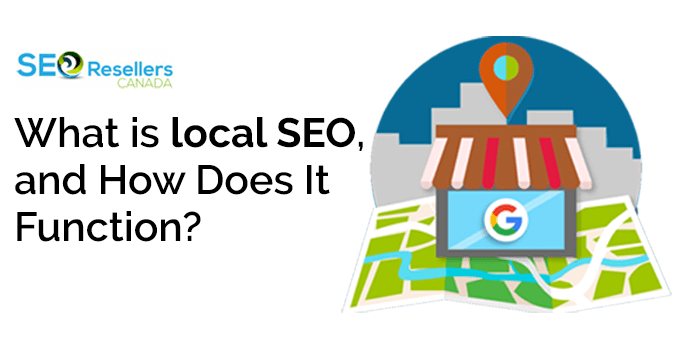No matter what type of website you own, massive growth in website traffic is the ultimate goal. In fact, website owners are keen to know the impact of services offered by SEO consulting agencies on their website’s traffic before anything else.
While there are a variety of white-label SEO tactics to boost the flow of traffic to a site, one proven way is, of course, through optimizing the website for different languages and countries.
Irrespective of your industry niche, you are bound to have an international market for your content, products or services. But the problem is that not every person across the globe speaks English as a first language.
Yeah, you might decide to target English speakers across the world, but that means missing out on a huge audience online, given only 28% of internet users speak English. Hence, focusing on multi-lingual marketing should be a goal, especially if you wish to conduct multi-country marketing.
But besides the language, there are a handful of things that you might require doing to make your website structure country-specific and global-friendly. In this blog, we will determine how to do the same.
1- What are the main tips for developing a country-specific website structure?
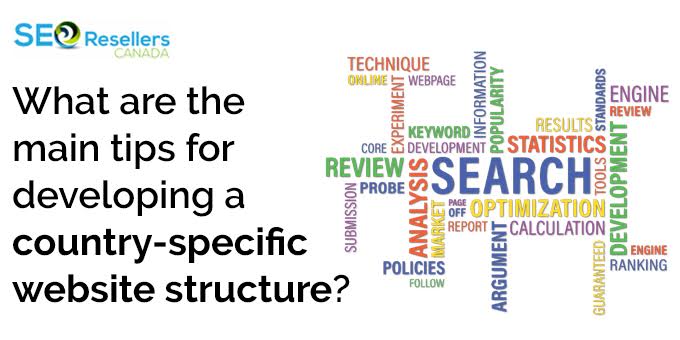
1.1- Start with optimizing the content for different languages
To create an internationally appealing website, your first focus should be on content transcreation. It helps in translation and recreating the content without hampering its context and meaning.
If you own a multi-lingual website, consider optimizing the texts to make the site accessible for your foreign customers. It is imperative to cross-check whether or not the meaning of the content changes as soon as the translation is hit. Keep in mind, improperly translated text can sometimes convey a message incorrectly, thereby hurting your brand’s credibility.
Thankfully, there are ways to optimize the content on the website for different languages, such as –
- There are many software and tools out there, like Phrase, TextUnited and Pairaphrase, that help with the complete translation of the content without impacting the flow and readability.
- Or perhaps, consider working with expert agencies that are known for producing website structure design that is country-specific.
- Invest in local content creators who can produce country-specific site and blog content for you, thereby providing the readers with an authentic news experience.
- Hire translators if you feel that translating tools are making the content sound robotic, meaningless and uninformative.
1.2- Focus on country-specific domain extensions
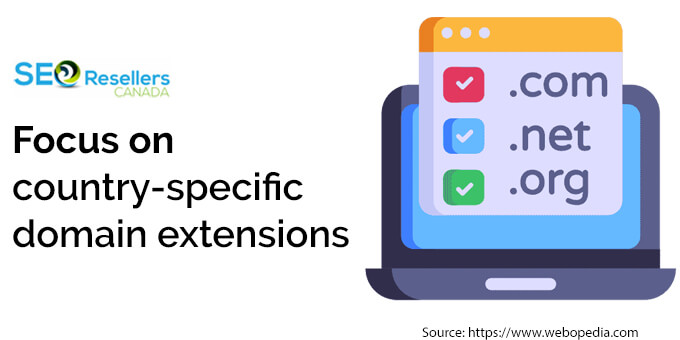
Almost every website owner is meticulous about selecting a good domain name. Well, ensure that you extend your practice of meticulousness when selecting the domain extension, too.
While .com and .org websites have a higher rank on global search engines, given they target an audience across the world. You might want to purchase a particular country’s domain extension if you wish to target the audience from the same.
For instance, if you wish to target an audience across the UK, a .co.uk domain extension is a must-have. Similarly, if you wish to supply your products across the U.S., a .us domain extension can prove worthy.
But, before you decide to extend your brand’s international reach, you will first require owning a popular TLD (top-level domain) like .com, thereby preserving your brand.
1.3- Steer clear from fixed localized options
There are many websites that select a default website language and domain on the basis of dynamic GeoIP tracking. By doing so, you are creating an automatic redirecting. For instance, when a user accesses eBay from the UK, he gets redirected automatically to www.eBay.co.uk with the language set to English.
But some websites allow the users, irrespective of their country, to access their website without having any fixed localized settings. What happens here is irrespective of where the search is made from, the user isn’t limited by his current physical location.
1.4- Employ Geo-targeting tools
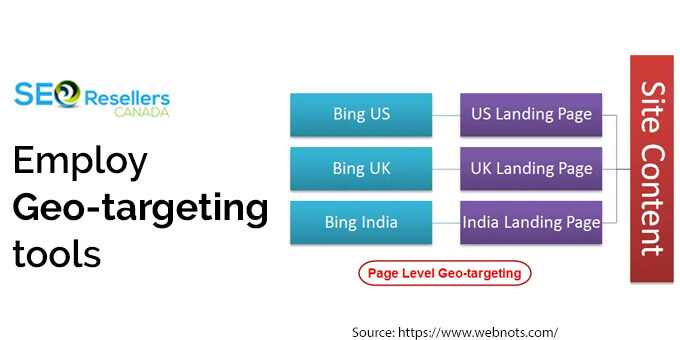
Another proven way of creating country-specific websites is by simply letting Google know that you wish to target a particular country.
As per Statista, Google dominates the search engine market and has maintained a 92.47% market share. By letting Google know which country you wish to target, you can gain better traction at reaching the chosen country better. To do this, you will need to login into your Google account that is linked to your website. Then go to the Google webmaster tool, Search Console.
You should find “Search Traffic.” Click on it and then choose “International targeting” to select the country you wish to target.
But again, there is no guarantee that your chosen country would not have multi-lingual speakers. In such cases, using hreflang tags can assist in producing content for mobile website design for both local and broad topics.
Hreflang tags are HTML tags () that tells the search engines that a website is written in a specific language.
For the easiest implementation of hreflang tags for multi-lingual speakers across the countries, you can create a folder of all the hreflang tags and submit them to an XML sitemap.
1.5- Optimise the server location
The next thing you can focus on to create a country-specific responsive website design is optimising the server location. The location of your server can help drive location-specific traffic to the website.
So, now determine where the server is located. Is it located near your target audience or not? For instance, if your target audience is located in Canada, it would be helpful if your website was hosted by Canada-based servers. This ensures that your website loads faster in your country, thanks to the server’s IP. Even the search engine bots will be able to determine the server’s location.
The notion behind optimizing the website to the server location is to obtain a better site ranking in your targeted country.
1.6- Focus on country-specific backlinks
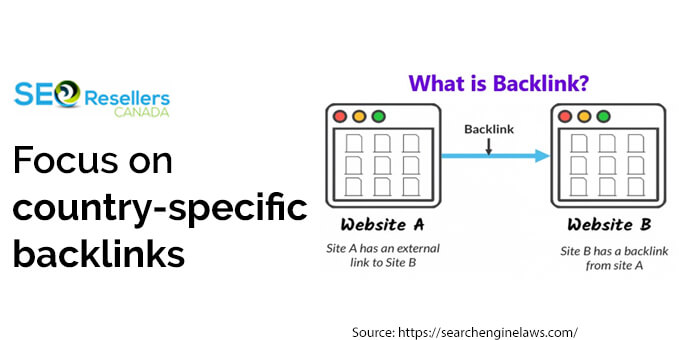
Backlinking is an integral part of search engine optimization. You cannot ignore it, especially if you aim for your brand to be deemed as an authoritative figure in your industry niche.
Backlinks are crucial for determining the content’s popularity. Similarly, it can help attract country-specific traffic. Therefore it is wise to target country-specific backlinks.
For instance, if you wish to target your users from the U.S., you might want to take advantage of guest blogging opportunities for websites that are U.S.-based, thereby leveraging your link-building strategy. You may also learn how to properly comment on blogs and relevant posts.
Another thing you can do to solidify your link-building strategy is to submit your website to local web directories and local search engines. This can help in producing country-specific backlinks that with can significantly assist in determining the driven traffic’s geolocation.
1.7- Lower the text used on images
Keep in mind that there is a limit to what Google can translate and what it cannot for your internationally-located customers.
For instance, when it comes to images, Google certainly cannot translate the text available on the images. This only says that you must limit the usage of text on images.
There are brands that focus on visual appeal, thereby using numerous images as headings, which is not a problem. The problem starts when there is text on the image that search engines are incapable of translating. With zero information about what is written, there remains the chance of losing potential buyers who are oblivious to the foreign language.
And trust us, no matter how advanced the translator/software one runs on your multi-lingual site, the graphical text will remain unchanged.
Hence, focus on lowering or adding no text on the images to make your modern website design better and accessible for international customers.
1.8- Maintain a pivotal colour arrangement

You may not know about this but every colour has a different meaning in a different country. But you might know that colour combinations matter the most to entice and attract customers.
For instance, take these stats into consideration –
- Between 62% to 90% of purchase decisions are made solely based on the colour.
- 85% of shoppers take colour into account when making a conscious product purchase.
When creating a country-specific business website design strategy, focusing on colour arrangement becomes both a complicated yet crucial aspect. Hence, start with using the colour smartly to entice the masses. Take your industry niche into account, identify who your target audience is and choose the colour accordingly. For instance, if you run a baby clothing website, you know that your audience is parents. And you might also know that pink and blue are prevailing colours in the baby product industry. Consider using those to your benefit.
The notion behind maintaining colour arrangement is to design a website accordingly to global appeal. This way, you can save your money on setup, management and even promotions of multiple sites.
1.9- Integrate localized shopping convenience
Your website URL structure should do more than just make it easy to find products on the website. It should make international shopping easy and convenient, too.
If you wish to introduce an international ecommerce store for customers across the border, consider –
- Informing the buyers about the availability of the product for shipping at their local address.
- Giving the buyers an option to convert the price in their local currency, too, thereby making your Kelowna website design user-friendly. You can employ relevant API tools for currency conversion.
- Enabling the buyers to cross-check the delivery costs and taxes before they initiate the check-out process, thereby lowering the cart abandonment.
- Providing multiple payment gateways based on the country. Every country has a prevalent mode of payment that customers are comfortable with and feel secure using.
1.10- Do not overlook local searchers
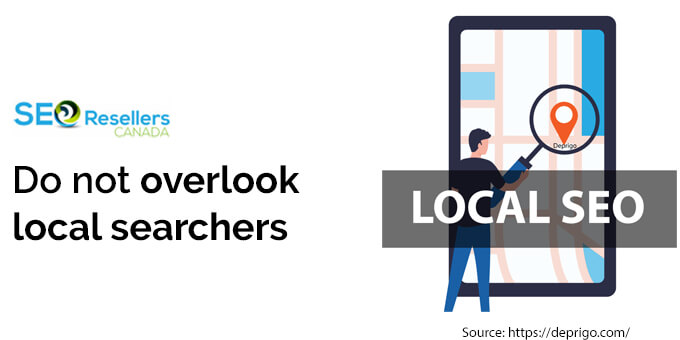
If you have decided to sell the same products across the locations at the same price, then you might not require maintaining multiple websites for every location across the country. Instead, have your professional website designer add location-targeted sub-folders to the website. You may also want to employ a geo-targeting feature in the Google Webmaster account.
But if you aim to have different versions of your website to provide the customers with location-specific offers, products and services, then you will require incorporating top-level domains in your professional website design, including .uk, .es, etc., (ccTLD). With multiple websites, you will require paying individual attention to content, meta descriptions, keywords, titles, etc., as per the local language to retain steady and profitable SEO results.
Since all these aspects of designing a country-specific website are complicated, you are better off with a web developing agency that has past experience in dealing with a project similar to yours. Experts can also make you familiar with concepts that seem complicated and even assist with competitor website keyword analysis to further solidify your country-specific website strategy.
1.11- Optimize the website’s loading speed
Due to the varying internet connectivity across the globe, the loading speed of your web pages can vary significantly from country to country.
But as we know that loading speed plays a crucial role in reducing bounce rates, focusing on it is a must.
To deliver a seamless experience to the customers, try optimizing the speed of your website. Also, don’t forget to view how your content is being served to customers across the nation.
To create a powerful global website, focus on using a content delivery network (CDN). It is a group of servers from across the globe that helps in speeding the site up, irrespective of where the website is being accessed from. With relevant CDN, you can enable your content to be served in the U.S. without having to do it from your web host in Canada.
2- Wrapping it up
Global web design and cultural dimensions are two sides of the same coin. So, whenever you decide to introduce your brand to international clients, ensure that you make your website capable of serving diverse customer tastes.
Start by choosing a reliable expert or agency like SEO Resellers Canada, who is up for the challenge of making your website structure design country-specific. Then perhaps you can sit with the experts to work on the above-mentioned suggestions.
Keep in mind creating a responsive website design that is only country-specific doesn’t happen overnight. Strategic planning, thorough competitor keyword tracking, patience, and a lot of creative thinking are a part of the process!













